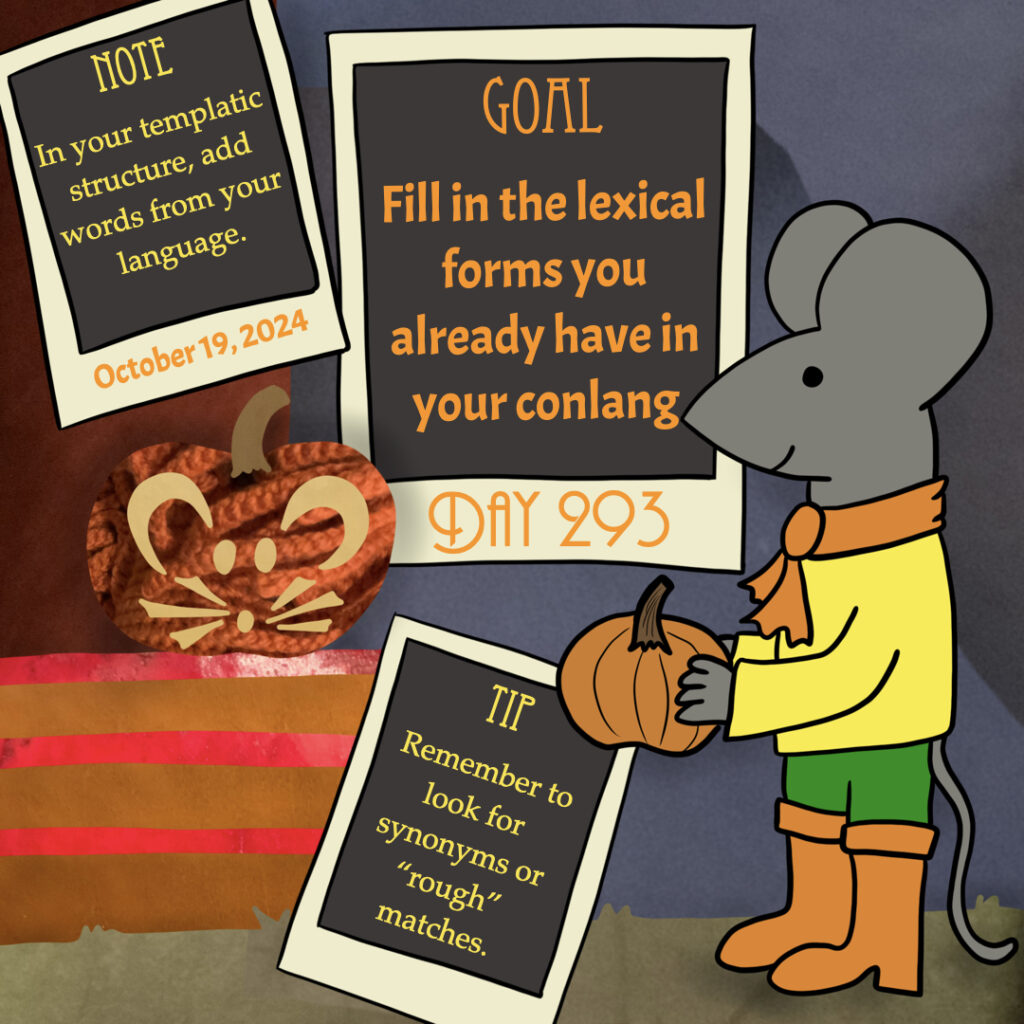
Goal: Fill in the lexical forms you already have in your conlang
Note: In your templatic structure, add words from your language.
Tip: Remember to look for synonyms or “rough” matches.
Work focus: Organize/Plan/Structure
So far you have created a template for translation, restructuring the clauses and rewording areas to better fit how your language works. Today’s goal is to go through and add the actual word forms in from your language that you already have. When I do this stage, I like to do a “quick drop” of lexical forms. Later passes will provide me time to fill in the grammatical details.
As a simple example, let’s say I want to translate the sentence “The woman knitted scarves” into my language Zhwadi, which is SOV. Here is what I might do as I fill in words for today’s pass through the text.
- English: The woman knitted scarves every evening.
- Restructured: person scarves every evening [loc?] knitted
- Zhwadi in progress: pela lurimavó xxx diraya [loc?] lughún
Notice that I needed to replace “woman” with “person,” as I don’t currently have a gender-specific word for “woman” and have no immediate plans to create one.
I don’t have a word for “every” yet, so I just put in a series of x’s to indicate I need to consider that moving forward. I also am not sure whether it would be best to put “every evening” into a case, such as a locative, to indicate during a time. So that is a decision I need to consider in later stages. I have plugged in the words in Zhwadi, but I haven’t added the predictable grammatical details yet, such as case-marking and verb-indexing. Because plural forms of nouns are unpredictable, I put the plural form for “scarves” into my working template.
Filling in vocabulary sets you up for a smoother translation later, highlights more areas you may want to consider rewording, and helps you identify what words you need to create in your language. As you work, though, don’t forget to search for synonyms in your language. For instance, if you don’t have a word for “scarf,” you might see if you have a word for “shawl” or “wrap” and consider if your speakers would distinguish among those types of outerwear. If your speakers don’t knit, then you might just need a verb of creation in that sentence (e.g. “the woman made scarves”).
